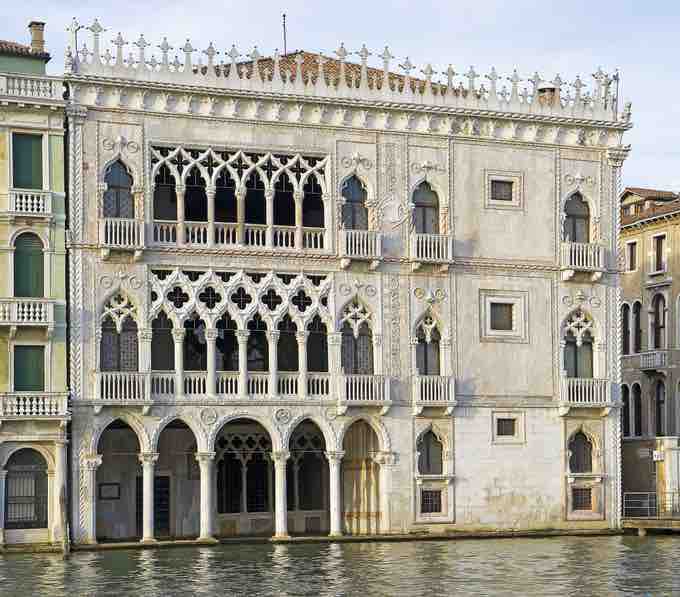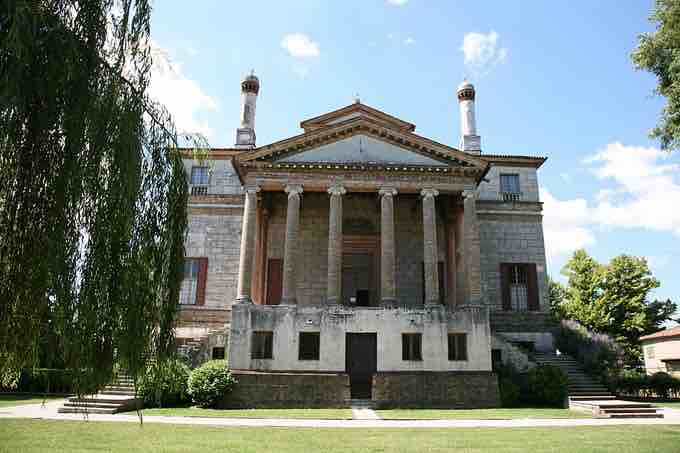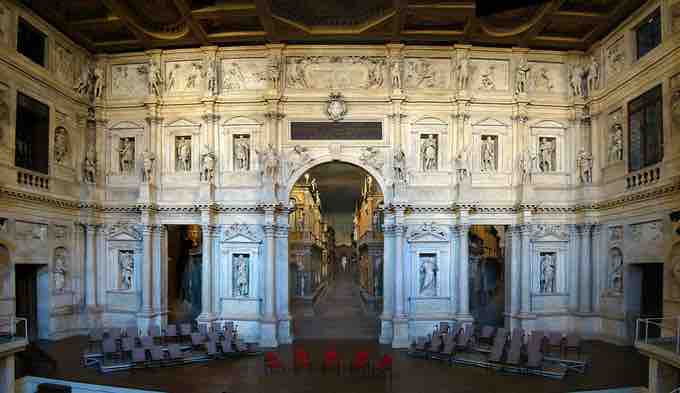Venice, the capital of the Veneto, has a rich and diverse architectural style, the most famous of which is the Gothic style. Venetian Gothic architecture is a term given to a Venetian building style combining use of the Gothic lancet arch with Byzantine and Ottoman influences. The style originated in 14th century Venice, where the confluence of Byzantine style from Constantinople met Arab influence from Moorish Spain. Chief examples of the style are the Doge's Palace and the Ca' d'Oro in the city. The city also has several Renaissance and Baroque buildings, including the Ca' Pesaro and the Ca' Rezzonico.
In the Venato, the Renaissance ushered in a new era of architecture after a phase of Gothic art, with the creation of important works including the Ca' d'Oro and the churches of Santa Maria Gloriosa dei Frari and of Saints John and Paul in Venice. This phase of architecture demonstrates how Gothic and Byzantine influences lingered much longer in Venice than they did in Florence or Rome during the Renaissance.

Ca' d'Oro
Ca' d'Oro façade overlooking the Grand Canal in Venice
Later architecture in Venice and the Veneto was largely based on the work of Andrea Palladio, who designed and completed some highly influential works, including villas in the mainland, Vicenza, Padua, and Treviso. In Venice, he designed the Basilica of San Giorgio Maggiore, the Il Redentore, and Zitelle on the island of Giudecca. Palladian architecture, in masterpieces such as Villa Emo, Villa Barbaro, Villa Capra, and Villa Foscari, evoked the imagined grandeur of antique classical Roman villas.

Villa Foscari
The front façade of the Villa Foscari features several neoclassical columns.
This aesthetic, established through Palladio's publications, proved very popular and underwent a revival in the neoclassical period. For instance, Palladian villas were designed so that the owner visibly exerted control over production activities of the surrounding countryside by structuring the functional parts, such as the porch, close to the central body. In the case of Villa Badoer, the open barn, formed by a large circular colonnade enclosing the front yard in front of the villa, created a space that recalled the ancient idea of the Roman Forum, bringing all campaign activities to the front of the villa itself.
Palladio created an architectural movement called Palladianism, which had a strong following in the next three centuries. Palladianism inspired architects, some of them his direct students, including Vincenzo Scamozzi, who completed several works that echoed Palladio's aestheticism, including the first Teatro Olimpico in Vicenza.

Teatro Olimpico
Scaenae frons of the Teatro Olimpico. The large arch in the center is known as the porta regia or "royal arch."